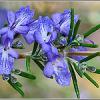Regarding aspirin, one response by 1kgcoffee in the thread that you linked was correct in stating that aspirin "stops prostaglan formation by inhibiting COX". I am still trying to figure out what the consensus on aspirin use is here. I am not sure if the low dose coated aspirins would produce the same effect as the regular 350mg tablets.
On the topic of salicylic acid - this can be found cheaply in powdered dry form, I use 2% salicylic acid pads for my face and to treat ingrown hairs. The tricky bit could be mixing the concentration right so you dont burn yourself. It does tend to sting even at a 2% concentration.
So that should be considered in light of possible adverse consequences for cancer. It makes me wonder about the accounts I've read of life-extensionists dying overwhelmingly from cancer since not to long ago vitamin-C (ascorbate) mega-dosing was common (and likely still is). At any rate it makes me wonder whether topical application of l-threonate (not ascorbate) might produce a result, perhaps a salicytic acid combo help with penetration? The point being to avoid having it spread to unwanted areas of the body? I may be wrong about the risk, again I am not a doctor, the quote at the end of this post cites studies that seem to show that l-threonate is safe.
Rooibos sounds interesting, drinking the tea may be your best bet to raise catalase:
"Scientific studies in the public domain dealing with the topical/cosmetic applicationof rooibos extract are, however, very limited. The role ofaspalathin, the major rooibos flavonoid and antioxidant, has notyet been clarified. Poor penetration of the skin by aspalathin hasbeen demonstrated byHuang et al. (2008a). An anti-wrinkleeffect was demonstrated for a formulation containing rooibosand tea (Camellia sinensis)(Chuarienthong et al., 2010). Sincerooibos extract was not tested alone it is not possible to makeconclusions about its efficacy as an anti-wrinkle agent.According toGlynn (2010)the topical application of an herbalmixture, containing green rooibos extract, alleviates malepattern baldness. A recent US patent application deals withthe protective effect of rooibos extract against hair colour loss(Joppe et al., 2009)."
"The plant extracts showed strong relationships between 5α-reductase inhibitory and hair growth promoting activity, and between 5α-reductase inhibition and the number of hair follicles. This indicates that plant extracts may be beneficial as an alternative medicine. Our group focused on using plant extracts as cosmeceuticals for prevention and treatment of hair loss. To achieve a practical alternative topical treatment for hair loss, Carthamus tinctorius is currently being developed as a suitable hair formulation, using nanoparticles to deliver active substances directly to the hair follicles."
Some results on cucrumin, I've found posts in other forums that might explain how this is helpful:
"Here's my citation log:
DHT > DKK-1:
http://www.nature.co.../5700999a.html
"A co-culture system using outer root sheath (ORS) keratinocytes and DP cells showed that DHT inhibits the growth of ORS cells, and neutralizing antibody against DKK-1 significantly reversed the growth inhibition of ORS cells."
http://www.bmbreport...EzMiUyOS5wZGY=
"We observed via RT-PCR analysis and enzyme-linked immunosorbent assay that DHT-induced DKK-1 expression was attenuated in the presence of L-threonate. We also found that DHT-induced activation of DKK-1 promoter activity was significantly repressed by L-threonate. Moreover, a co-culture system featuring outer root sheath (ORS) keratinocytes and DPCs showed that DHT inhibited the growth of ORS cells, which was then significantly reversed by L-threonate. Collectively, these results indicate that L-threonate inhibited DKK-1 expression in DPCs and therefore is a good treatment for the prevention of androgen-driven balding."
DKK-1 > WNT:
http://www.touchbrie...3196/walker.pdf
"Dickkopf family members (Dkk1 and Dkk2) and secreted frizzled related proteins (Sfrps) are families of extracellular proteins that negatively modulate canonical Wnt signalling."
http://www.sciencedi...56328206004078
"More widespread Dkk1 expression (driven by the Col1A1 3.6 kb promoter) yielded osteopenia with forelimb deformities and hairlessness,"
WNT - LGR5:
http://www.ncbi.nlm....ubmed/22991440
"The structures of the outer layer and of the bulb, which ensures HF growth, have not been completely established. To clarify these points, we have conducted in vivo clonal analyses with 3D imaging in mice. ... Furthermore, we describe an additional element, the bulb outer layer, which is contiguous and shares markers (e.g. Lgr5) with the basal ORS but is formed by a separate lineage that belongs neither to the ORS nor Cp lineage."
http://www.sciencedi...34590908005766
"Jaks et al. used elegant in vivo lineage tracing experiments to show that Lgr5+ cells give rise to all cell lineages of the hair follicle below the sebaceous gland; contribution to the sebaceous gland was only found in transplantation experiments, which may not reflect the physiological role of these cells. Assuming there was no leakiness in the lineage-tracing experiments, Lgr5-derived cells persist for at least 14 months, indicating that Lgr5+ cells are long lived, consistent with their function as true stem cells."
http://www.ncbi.nlm....ubmed/22787049
"Lgr5-expressing supporting cells, sorted by flow cytometry and cultured in a single-cell suspension, compared with unsorted cells, displayed an enhanced capacity for self-renewing neurosphere formation in response to Wnt and were converted to hair cells at a higher (>10-fold) rate. The greater differentiation of hair cells in the neurosphere assay showed that Lgr5-positive cells had the capacity to act as cochlear progenitor cells, and lineage tracing confirmed that Lgr5-expressing cells accounted for the cells that formed neurospheres and differentiated to hair cells."
http://www.ncbi.nlm....pubmed/23190887
"A signal first arising in the dermis to initiate the development of hair follicles has been described for many decades. Wnt is the earliest signal known to be intimately involved in hair follicle induction."
WNT > GSK3 > SMAD1:
http://www.ncbi.nlm....les/PMC2200633/
"In the present study we demonstrate that phosphorylation at the GSK3 sites represses the transcriptional activity of Smad1 by enhancing proteasomal degradation of pSmad1Cter."
http://www.hhmi.ucla...rs_CGFR_09.pdf
"Phosphorylation of Smad1 by MAPK and GSK3 result in its polyubiquitination and transport to the centrosome where it is degraded by the proteasome. These linker phosphorylations inhibit BMP/Smad1signaling by shortening its duration. Wnt, which negatively regulates GSK3 activity, prolongs the BMP/Smad1 signal"
BMP > SMAD1 > DLX3:
http://www.nature.co.../1204117a.html
"Smad1 stained primarily in the cytoplasm of the epidermis, hair follicles, and some dermal fibroblasts (Figure 3). Although both Smad1 and -5 have been suggested to mediate BMP signaling, the staining pattern of Smad5 in the skin was different from Smad1 ... Hair follicles harbor epidermal stem cells that determine epidermal proliferation, differentiation and regeneration. Therefore, if some of these Smads have effects on hair follicles, they may potentially affect epidermal development, wound-healing and carcinogenesis."
http://researchresou...R049778-03.htm
"BMPs, noggin, Smad1 and Smad5 are broadly expressed in the hair follicle epithelium and mesenchyme during its development and cycling. However, due to embryonic lethality of the noggin, Smad1 or Smad5 knockout mice, their roles in the control of cell proliferation, differentiation and apoptosis in the hair follicle remain largely unknown. Based on our preliminary data, we hypothesize that spatial and temporal specificity of BMP effects in distinct hair follicle compartments is determined by noggin-dependent magnitude of signaling through BMP receptors and by differential recruitment of the Smad1 and Smad5 transcriptional regulators."
http://www.ncbi.nlm....pubmed/18684741
"Colocalization of phospho-Smad1/5/8 and Dlx3 is consistent with a regulatory role for BMP signaling to Dlx3 during hair morphogenesis. Importantly, mutant catagen follicles undergo delayed regression and display persistent proliferation. Moreover, ablation of Dlx3 expression in the telogen bulge stem cells is associated with a loss of BMP signaling, precluding re-initiation of the hair follicle growth cycle."
http://www.ncbi.nlm....pubmed/11788714
"Mutation of the Smad1/Smad4-binding site inhibited transcriptional activation of the Dlx3 gene by BMP-2. In the hair follicle, where Dlx3 is expressed in the hair matrix cells, BMP-2 also activates Dlx3 transcription. These results provide a possible mechanism of action for the BMP signaling pathway on the regulation of Dlx3."
DLX3 > Hair:
http://www.ncbi.nlm....pubmed/18492670
"This transcription factor is known to be essential for placental formation and to be involved in skin and skeletal organogenesis. In humans, a frameshift mutation in the coding sequence of the DLX3 gene results in an ectodermal dysplasia called Tricho-Dento-Osseous syndrome (TDO). The main features of this autosomal dominant disorder are defects in hair, teeth, and bone."
http://www.ncbi.nlm....pubmed/22442153
"We also found that HR down-regulated Dlx3 mRNA expression through suppression of Dlx3 promoter activity. In addition, we showed that Dlx3 regulated the expression of IRS keratins. Our results demonstrate that regulation of Dlx3 by HR affects the IRS keratin expression, thus modulating the formation of IRS of hair follicle."
WNT - MSC:
http://www.ncbi.nlm....pubmed/23124852
"In this study, we reported that the Wnt/?-catenin signaling was a potent activator of reactive oxygen species (ROS) generation in MSCs. After scavenging ROS with N-acetylcysteine, Wnt/?-catenin signaling-induced MSC aging was significantly attenuated and the DNA damage and the expression of p16(INK4A), p53, and p21 were reduced in MSCs. These results indicated that the Wnt/?-catenin signaling could induce MSC aging through promoting the intracellular production of ROS, and ROS may be the main mediators of MSC aging induced by excessive activation of Wnt/?-catenin signaling."
http://www.sciencedi...78111908006367
"This review outlines the current understanding of the distinct Wnt intracellular pathways including both canonical ?-catenin/TCF(LEF1) signaling and non-canonical cascades mediated by JNK, PKC, Ca2+ or Rho, and how they are involved in the regulation of MSC proliferation and differentiation. We also discuss the coordination between different Wnt signaling cascades to precisely control MSC cell fate decisions, and we dissect the functional cross-talk of Wnt signaling that is known to occur with other growth factor signaling pathways."
http://www.ncbi.nlm....pubmed/17546602
"We focus specifically on the involvement of low-density lipoprotein-related protein 5 (LRP5), T-cell factor 1 (TCF1), and Frizzled (Fz) receptors, in the presence or absence of exogenous, prototypical canonical (Wnt3a), and non-canonical (Wnt5a) Wnts. In undifferentiated MSCs, LRP5 and TCF1 mediate canonical Wnt signal transduction, leading to increased proliferation, enhanced synergistically by Wnt3a. However, LRP5 overexpression inhibits osteogenic differentiation, further suppressed by Wnt3a. Wnt5a does not affect cell proliferation but enhances osteogenesis of MSCs. Interestingly, Wnt5a inhibits Wnt3a effects on MSCs, while Wnt3a suppresses Wnt5a-mediated enhancement of osteogenesis."
http://aura.abdn.ac....rentiation.pdf
"Overall, canonical Wnt signaling appears to stimulate the differentiation of MSCs committed to osteogenic lineage, while it inhibits the terminal differentiation of mature osteoblasts."
DKK-1 MSC
http://www.ncbi.nlm....pubmed/15504735
"Because Wnt antagonists increase the number of non-committed hMSCs in culture, they may be of use in increasing the rate of osseous wound healing in vivo by increasing the level of systemically migrating hMSCs. Therefore, such molecules could contribute to the development of a novel family of pharmaceutical agents for the improvement of the healing process in humans."
http://www.ncbi.nlm....pubmed/15965110
"Our investigation of the role of Wnt signaling in osteogenesis by hMSCs ex vivo has demonstrated that osteogenesis proceeds in response to bone morphogenic protein 2 stimulation and is sustained by Wnt signaling. In the presence of Dkk-1, an inhibitor of Wnt signaling, the cascade is disrupted, resulting in inhibition of osteogenesis."
MSC - Paracrine Factors:
http://www.ncbi.nlm....pubmed/22188562
"Human adult mesenchymal stem cells (MSCs) support the engineering of functional tissue constructs by secreting angiogenic and cytoprotective factors, which act in a paracrine fashion to influence cell survival and vascularization. MSCs have been isolated from many different tissue sources, but little is known about how paracrine factor secretion varies between different MSC populations. We evaluated paracrine factor expression patterns in MSCs isolated from adipose tissue (ASCs), bone marrow (BMSCs), and dermal tissues [dermal sheath cells (DSCs) and dermal papilla cells (DPCs)]. Specifically, mRNA expression analysis identified insulin-like growth factor-1 (IGF-1), vascular endothelial growth factor-D (VEGF-D), and interleukin-8 (IL-8) to be expressed at higher levels in ASCs compared with other MSC populations whereas VEGF-A, angiogenin, basic fibroblast growth factor (bFGF), and nerve growth factor (NGF) were expressed at comparable levels among the MSC populations examined. Analysis of conditioned media (CM) protein confirmed the comparable level of angiogenin and VEGF-A secretion in all MSC populations and showed that DSCs and DPCs produced significantly higher concentrations of leptin."
WNT3a - BMP-2:
http://www.ncbi.nlm....pubmed/22213482
"Meanwhile, we also found that Wnt3a treatment strongly stimulated Bmp-2 expression, and that the subsequent increase in Bmp-2 protein was determined in Wnt3a-treated conditioned medium (CM). Treatment of MC3T3-E1 cells with CM stimulated phosphorylation of the Smad1/5 proteins and their downstream Dlx5 mRNA expression. The CM-mediated increases of phospho-Smad and Dlx5 expression were not blocked completely by a Wnt3a antagonist, Dkk-1, but were almost completely suppressed by the addition of a Bmp-2 antagonist, Noggin. Collectively, Wnt3a stimulates Mepe transcription directly by a canonical Wnt signaling pathway through ?-catenin and Lef-1 and indirectly through the activation of a Bmp-2 autocrine loop."
http://www.ncbi.nlm....pubmed/14584895
"Wnt3a-mediated ALP induction was inhibited by overexpression of either Xddl, dickkopf 1 (dkk1), or LRP5deltaC, indicating that canonical beta-catenin signaling is responsible for this activity. The use of Noggin, a bone morphogenic protein (BMP) inhibitor, or cyclopamine, a Hedgehog inhibitor, revealed that the induction of ALP by Wnt is independent of these morphogenetic proteins and does not require de novo protein synthesis. In contrast, blocking Wnt/LRP5 signaling or protein synthesis inhibited the ability of both BMP-2 and Shh to induce ALP in mesenchymal cells. Moreover, BMP-2 enhanced Wntl and Wnt3a expression in our cells. In MC3T3-E1 cells, where endogenous ALP levels are maximal, antagonizing the Wnt/LRP5 pathway led to a decrease of ALP activity. In addition, overexpression of dkkl reduced extracellular matrix mineralization in a BMP-2-dependent assay."
WNT3a - HF Melanin:
http://www.ncbi.nlm....pubmed/22465131
"By using melanocyte-targeted Dct-LacZ transgenic mice, we found that Wnt3a signaling is activated in mouse HF melanocytes during anagen of hair cycle. To further explore the potential functions of Wnt3a in mouse melanocytes, we infected melan-a cells with AdWnt3a to serve as the production source of Wnt3a protein. We demonstrated that Wnt3a promoted melanogenesis through upregulation of MITF and its downstream genes, tyrosinase and TRP1, in melanocytes. In vivo, AdWnt3a rescued the effects of AdsimMITF on HF melanocytes and promoted melanin synthesis."
http://www.ncbi.nlm....pubmed/22710324
"We infected melan-a cells with AdWnt3a to serve as the production source of the Wnt3a protein. MTT assay, 5-bromodeoxyuridine incorporation assay and flow cytometric analysis showed that Wnt3a inhibited the proliferation of melan-a cells and this was associated with decrease of cells in the S phase and increase of cells in the G(1) phase. Melanin content and tyrosinase activity assay revealed that Wnt3a significantly promoted melanogenesis of melan-a cells. Furthermore, western blot analysis showed that Wnt3a upregulated the expression of microphthalmia-associated transcription factor and its downstream target genes, tyrosinase and tyrosinase-related protein 1 in melan-a cells."
http://www.ncbi.nlm....pubmed/16354197
"Melanin synthesis in the hair follicle (HF) is strictly coupled to the growth stage of the hair cycle and is interrupted during follicle regression (catagen) and resting. ... During late catagen, TUNEL and Ki-67 negative melanocytes expressing Bcl-2 are seen in the secondary germ of the HF. Lack of proliferation in the follicular melanocytes during catagen suggests that secondary hair germ of late catagen HF is most likely repopulated by melanocytes arising from the outer root sheath or follicular papilla of early/mid-catagen HF. Taken together, these data suggest a possible scenario and mechanisms of the remodeling of the follicular pigmentary unit during HF anagen-catagen-telogen transition and may be used for the establishing in vivo models for pharmacological modulation of melanocyte apoptosis and survival during the hair cycle."
WNT - PGE2:
http://www.cell.com/...34590909001076
"WNT and PGE2 signaling pathways are each associated with stem cell activity in the hematopoietic system. In a recent issue of Cell, Goessling et al. (2009) use the zebrafish model to reveal a conserved PKA-dependent mechanism that connects the two pathways via ?-catenin, enhancing stem cell proliferation and tissue regeneration."
WNT3a > Caspase:
"We examined the effect of Wnt3a and Sfrp2 on HR-induced apoptosis. Wnt3a significantly increased cellular caspase activities and TUNEL staining in response to HR. Sfrp2 attenuated significantly Wnt3a-induced caspase activities in a concentration dependent fashion. Using a solid phase binding assay, our data demonstrates that Sfrp2 physically binds to Wnt3a. In addition, we observed that Sfrp2 dramatically inhibits the beta-catenin/TCF transcriptional activities induced by Wnt3a. Impressively, Dickkopf-1, a protein that binds to the Wnt coreceptor LRP, significantly inhibited the Wnt3a-activated caspase and transcriptional activities."
LPGDS - GSK3:
http://www.ncbi.nlm....term=gsk3 lpgds
"Furthermore, we examined the effect of L-PGDS incubation on insulin-stimulated Akt, glycogen synthase kinase-3beta (GSK-3beta), and ERK phosphorylation. Unexpectedly, we found that when WKY cells were pretreated with L-PGDS, insulin could actually induce apoptosis and failed to stimulate Akt/GSK-3beta phosphorylation. Insulin-stimulated ERK phosphorylation was unaffected by L-PGDS pretreatment in both cell lines."
Threonate:
http://www.ncbi.nlm....pubmed/21986570
"Calcium L-threonate was well tolerated in healthy Chinese subjects, with no pattern of dose-related adverse events. Plasma exposure increased with dose escalation, but linear pharmacokinetics were not observed over the studied doses. L-threonate was absorbed rapidly, and its absorption was enhanced by food intake. No systemic accumulation appeared after repeated administrations."
http://www.ncbi.nlm....pubmed/16554191http://www.ncbi.nlm....pubmed/23229796http://www.ncbi.nlm....pubmed/23229796http://www.ncbi.nlm....pubmed/20152124
ASC-2P:
http://www.springerl...502h52x1132l1/
Disclaimer: I'm not a doctor. Please do not use this to support any diagnoses or treatments."


















































